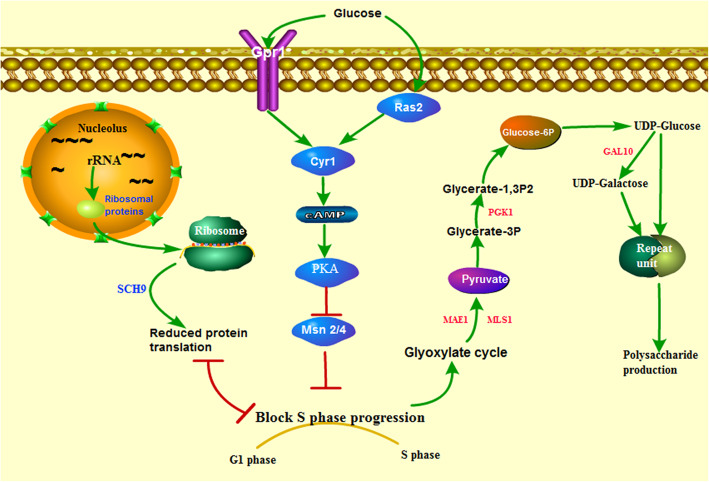Fig. 9.
Putative model of high polysaccharide production in the mutated H. erinaceus. The Ras-cAMP-PKA pathway could act as glucose signaling regulation. The dysfunction of glucose signaling regulation was due to its reduced expression of the Ras-cAMP-PKA pathway in the mutated H. erinaceus, which loses the glucose sensing and cause a long delay in the glucose response, finally resulting in the block of S phase progression. The block of S phase progression might lead to polysaccharide production by increasing the activity of the pathways involved in polysaccharide production. Glyoxylate cycle module and glycolysis module in Fig. 4f participate in the production of the glucose-6p, such as the role of MAF1, MLS1, PGK1 in the two modules. Glucose-6p connects to the pathways involved in producing repeat units through the MPBP in Fig. 6c, such as the role of GAL10 in the conversion from UDP-Glucose to UDP-Galactose. The block of S phase progression might interact with the reduced protein translation in the mutated H. erinaceus through SCH9. The image depicted in Fig. 9 is our own

